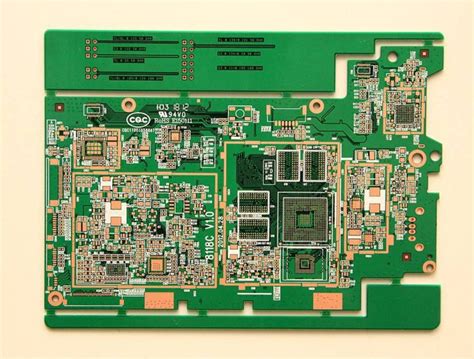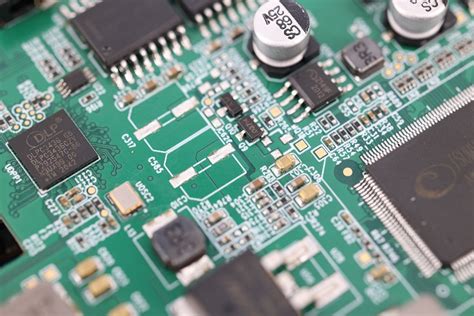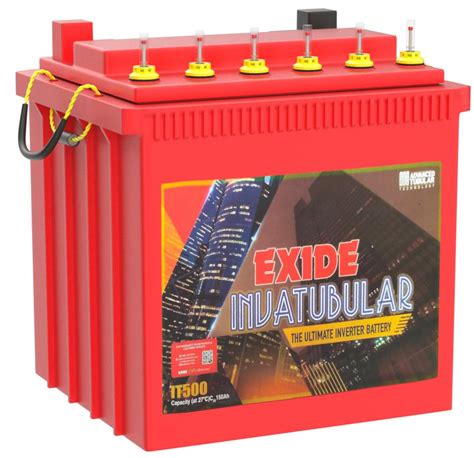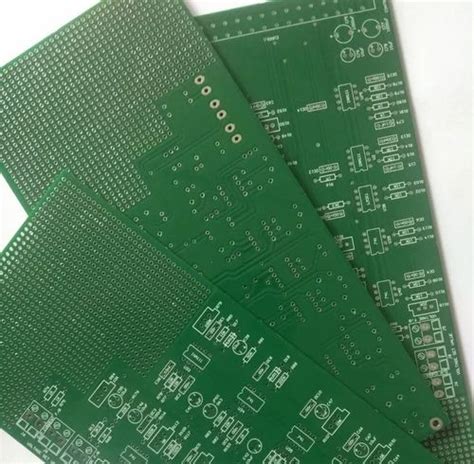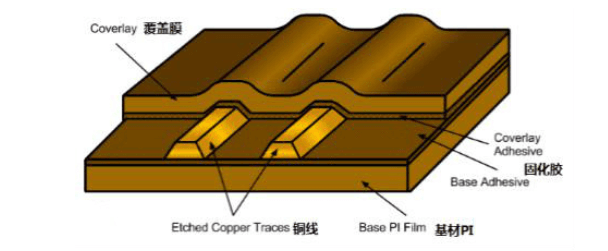Unlocking Innovation: A Comprehensive Guide to Custom PCB Production
Key Takeaways
When diving into custom PCB production, it’s essential to recognize the importance of selecting the right pcb manufacturing company. The choice you make can significantly impact your overall project. A reliable manufacturer not only ensures adherence to your design specifications but also offers competitive pcb manufacturing costs that reflect quality and precision. Understanding the nuances of the pcb manufacturing process helps you mitigate risks associated with production delays or faulty designs. It is crucial to familiarize yourself with various manufacturing techniques, as they can differ greatly among manufacturers, affecting both functionality and cost-efficiency. You should also take into account the specific applications for which your custom PCBs are intended; whether for electronics, automotive, or consumer gadgets, each context demands careful attention to detail in design and production. By employing best practices throughout your pcb manufacturing business, you position yourself to unlock innovative potential while ensuring that quality assurance measures are always in place to deliver a successful final product.
Introduction to Custom PCB Production
Custom PCB production is a vital process for bringing innovative electronic designs to life. When you venture into pcb manufacturing, you’re tapping into a specialized field that requires precision and expertise. Understanding the complexities of pcb manufacturing companies can help you navigate your project’s requirements more effectively. Each step, from conception to production, demands careful attention to detail and knowledge of various pcb manufacturing costs associated with different materials and techniques. Selecting the right components and design specifications is crucial in ensuring the functionality and reliability of your circuit board. As you engage with the pcb manufacturing business, consider what unique features your project needs, as this can influence both costs and production timelines. By prioritizing your design goals and assessing potential challenges early on, you can streamline the process and unlock the full potential of custom PCBs tailored specifically for your application, whether it’s in electronics, automotive sectors, or consumer devices.
Understanding the Design Phase
The design phase is a critical step in the custom PCB production process, where you define the architecture and functionality of your circuit board. This phase typically begins with a clear understanding of the project’s requirements, allowing you to establish specific design goals. You will have to consider factors such as size constraints, electrical performance, and the intended application of the PCB.
Using specialized software like CAD tools can streamline your design process, enabling you to create detailed schematics and layouts. This software is invaluable for simulating how your circuit will behave under different conditions, helping to identify potential issues before moving forward. Additionally, many PCB manufacturing companies offer design services that can assist you in optimizing your layout for manufacturability, which can potentially reduce pcb manufacturing costs.
Below is a table that highlights important aspects to consider during the design phase:
| Aspect | Importance |
|---|---|
| Functionality | Determines how well your PCB meets project requirements |
| Size & Shape | Must fit within physical constraints of the device |
| Component Placement | Affects signal integrity and performance |
| Trace Width | Crucial for current-carrying capacity and heat dissipation |
| Layer Count | Impacts complexity and pcb manufacturing cost |
By carefully navigating this phase, you enhance not only the performance of your custom PCB but also its manufacturability. Working with experienced professionals in your pcb manufacturing business can provide valuable insights into best practices for achieving optimal results during this crucial stage in custom PCB production.
Material Selection for Custom PCBs
When embarking on the journey of custom PCB production, one of the crucial steps you will encounter is material selection. The materials chosen for your printed circuit boards significantly influence the pcb manufacturing process, performance, and overall cost-efficiency. Various factors come into play, including the desired electrical characteristics, thermal stability, mechanical endurance, and environmental resilience.
FR-4 is a common choice for many applications due to its favorable electrical properties and affordability. However, if you’re developing products that will experience higher temperatures or require specific signal characteristics, you might consider materials like polyimide or ceramic. It’s essential to evaluate different pcb manufacturing companies and their offerings to determine which materials best suit your project’s unique demands.
“Always prioritize the requirements of your design when selecting materials; this initial decision can affect every subsequent step in pcb manufacturing.”
Additionally, understanding the various pcb manufacturing costs involved in different materials can help you balance performance and budget effectively. For instance, while advanced materials may come with higher upfront costs, they may ultimately save you in assembly or reliability issues down the line. As you navigate your pcb manufacturing business, consider how each material aligns with your project’s overall goals and timelines. By selecting suitable materials now, you’ll lay a solid foundation for a successful production outcome in the future.
Manufacturing Techniques Explained
When it comes to pcb manufacturing, understanding the various techniques is crucial for achieving optimal results. One of the primary methods employed in pcb manufacturing companies is subtractive processing, where excess material is removed to create the desired circuitry. This technique is often utilized in the production of modern PCBs due to its precision and ability to create intricate designs. Another popular method is additive manufacturing, where layers of material are added to build the circuit board. This method offers greater flexibility, allowing for more complex and customized designs that traditional methods might struggle to accommodate.
Additionally, techniques such as screen printing and photoengraving are commonly used in the prototyping phase of PCB development. These methods help in applying conductive inks and patterns accurately on base materials while ensuring consistent quality throughout the process. It’s essential that you consider pcb manufacturing cost, as different techniques can significantly impact your budget. Adaptability in choosing a method not only optimizes costs but also enhances product quality.
As you delve deeper into your pcb manufacturing business, staying updated with emerging technologies—like laser processing or hybrid approaches—can elevate your production capabilities. Understanding these diverse manufacturing techniques will empower you to make informed decisions, ensuring your custom PCBs meet both performance standards and project specifications with excellence.
Quality Assurance in PCB Production
In the realm of custom PCB production, ensuring top-notch quality is essential for successful outcomes. Quality assurance comprises various strategies that guarantee every aspect of the pcb manufacturing process meets rigorous standards. When selecting pcb manufacturing companies, you should prioritize those who adhere to thorough quality control measures, as this significantly influences the performance and longevity of the final product. The pcb manufacturing cost can sometimes seem daunting, yet investing in quality assurance can ultimately save you from potential failures that arise from poor execution. A sound quality control process often includes inspections at each stage of production, such as initial design validation, material checks, and testing of the final assembly. By embracing these quality assurance practices, you establish a robust foundation for your pcb manufacturing business that not only meets client specifications but also enhances your overall reputation in the market. Emphasizing this diligence supports your project’s success and promotes innovation within your design processes.
Applications of Custom PCBs
Custom printed circuit boards (PCBs) have a wide array of applications across various industries, making them essential components in modern technology. In the realm of electronics, custom PCBs facilitate the creation of innovative devices that meet specific performance standards, allowing you to implement features that enhance functionality and user experience. The automotive industry also benefits significantly from bespoke PCB designs, as they enable intricate systems for navigation, safety, and engine management systems. With the growing trend of smart consumer devices, manufacturers often turn to pcb manufacturing companies to produce tailored circuit boards that cater to unique specifications and user needs. Each application not only demonstrates the versatility of custom PCBs but also influences the pcb manufacturing cost, which can vary based on complexity and required materials. For those exploring a new pcb manufacturing business, understanding these applications is vital, as it allows you to identify niches and develop products that capitalize on emerging trends in technology. From health monitoring devices to wireless communication gadgets, the possibilities are endless when you unlock the potential of custom PCBs in your projects.
Best Practices for Successful PCB Design
When embarking on custom PCB production, adhering to best practices in PCB design is crucial for achieving optimal results. Begin by ensuring that your designs are well-organized; using a clear hierarchy for components and signals can significantly enhance readability. It is recommended to adopt standardized naming conventions for your layouts, as this helps both in the fabrication process and in future modifications. Furthermore, when selecting materials, consider their impact on performance and cost—choosing the right substrate can positively affect the overall PCB manufacturing cost.
Another critical aspect is the routing of traces; keep them as short as possible to reduce inductance and maintain signal integrity. Take advantage of CAD software that specializes in PCB design, which often includes features that facilitate error checking, such as electrical rule checks (ERC) to identify potential issues before moving to production. Collaborating with reputable PCB manufacturing companies can also provide you with insights on feasible designs and innovative manufacturing techniques.
Ensure that your design complies with the standards relevant to your target industry, whether it’s electronics, automotive, or consumer devices. By closely observing these best practices during the design phase, you can streamline the entire PCB manufacturing business process while minimizing potential obstacles during fabrication. With a well-structured plan and attention to detail, you are more likely to achieve a successful outcome in your custom PCB projects. For further information and expert assistance in navigating these complexities, consider checking out resources from established providers like Andwin PCB.
Troubleshooting Common PCB Production Challenges
When embarking on your journey in custom PCB production, it’s essential to recognize potential challenges that may arise during the PCB manufacturing process. One common issue you might encounter is design errors, which can stem from overlooked specifications or miscalculations in the schematic phase. Thoroughly review your designs before moving forward can help minimize these pitfalls. Another challenge is selecting the right materials; not all substrates will be suitable for your intended application, leading to increased PCB manufacturing costs if you need to redo parts of your project. Ensuring that you collaborate with reputable PCB manufacturing companies will provide you with options that align with your needs and budget.
Moreover, the production timeline can often be a point of contention. It’s crucial to establish realistic deadlines while keeping communication lines open with your PCB manufacturing business. Supply chain disruptions might cause delays that ultimately impact project timelines. Also, keep an eye on quality assurance protocols—insufficient testing can lead to failures in the field, necessitating costly revisions. Engaging in a proactive dialogue with manufacturers about these issues will facilitate smoother production processes and foster innovation as you navigate the intricate world of custom PCBs.
Conclusion
In summary, understanding custom PCB production is essential for anyone looking to engage effectively with the world of electronics. As you navigate the landscape of pcb manufacturing, it’s crucial to recognize the various components that contribute to a successful project. The selection of pcb manufacturing companies can greatly influence the outcome, as these firms bring different strengths and capabilities to the table. Furthermore, keeping a close eye on the pcb manufacturing cost is vital; it can impact your overall budget and project viability. Whether you’re an engineer working on advanced applications or a hobbyist embarking on a new venture, understanding the intricacies of pcb manufacturing business practices can significantly enhance your ability to create innovative solutions. By following best practices and being aware of potential pitfalls in each phase of production, you can foster creativity while ensuring that your custom PCBs meet all specified requirements. Let this guide empower you as you unlock new levels of innovation through expertly crafted custom circuit boards.
FAQs
When delving into custom PCB production, you may encounter several questions regarding the pcb manufacturing process and its intricacies. One of the most common inquiries revolves around pcb manufacturing companies and how to select the right one for your project. It’s essential to consider their experience and reputation in the industry to ensure quality results. Additionally, you might wonder about factors affecting pcb manufacturing cost. Various elements such as design complexity, material choices, and production volume can significantly influence pricing. Understanding these aspects can help you budget effectively for your pcb manufacturing business.
Another frequent concern involves the time required for production. The timeline for custom PCB fabrication can vary, and it often depends on aspects like design finalization and the specific techniques employed during manufacturing. Proficiently navigating these factors can lead to a smoother production experience. Furthermore, inquiries about quality assurance measures are vital; ensuring that your PCBs meet industry standards is crucial for functional performance.
By addressing these common questions, you enable yourself to make informed decisions throughout the custom PCB process, ultimately unlocking innovative solutions tailored to your needs.


